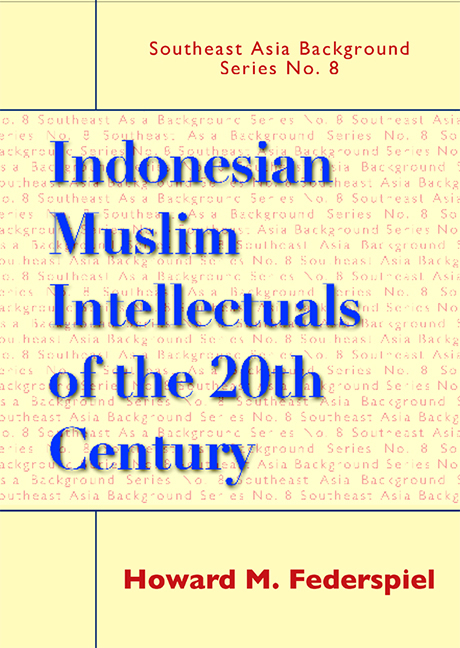4 - The Islamic Context in the Age of Sukarno
Published online by Cambridge University Press: 21 October 2015
Summary
THE JAKARTA CHARTER
During the Japanese occupation of Indonesia (1942 to 1945) little occurred in the way of Indonesian Muslim intellectual development; the effort to survive in a food-short and severely authoritarian society apparently dampened abstract thought. Indonesian political leaders, however, did continue their efforts at achieving independence, and in 1945 the Japanese authorities allowed them to plan for that eventuality. At the ensuing preparatory conference, delegates met to draft a constitution and other documents necessary for such action, with the blessing of the Japanese administration. The delegates were drawn from wide ethnic, regional, religious, and social groupings. The dominant group consisted of the Dutch-educated elite that had been in exile or prison during the Dutch era, but had been used by the Japanese to mobilize the Javanese population through a series of organizations with quasi-governmental authority. They overwhelmingly favoured a state which would be based on secularism and nationalism, but specifically not Islamic.
The Muslim grouping represented associations in good standing with the Japanese or individuals with considerable personal standing of their own. These Muslim leaders had been to Islamic schools in their formative years and had been in Muslim nationalist organizations throughout most of their lives. They favoured Islam as the guiding principle for the state and its operation. Consequently nationalist and Muslim outlooks were strikingly different, as they had been before the Japanese arrived. As well, both nationalist and Muslims leaders had their own group networks that allowed communication among members, and they were largely separate from one another and from the networks of still other groups, such as the Christians and Balinese. In the limited time available to the delegates, however, they had little communication with the larger population or with the organizations that the leadership groups represented.
A subcommittee charged with drafting a preamble to the constitution discussed and accepted a proposal from the Muslim group that came to be known as the “Jakarta Charter”.
- Type
- Chapter
- Information
- Indonesian Muslim Intellectuals of the Twentieth Century , pp. 45 - 60Publisher: ISEAS–Yusof Ishak InstitutePrint publication year: 2006



